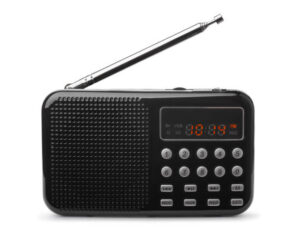1838—1896
Electric Telegraph
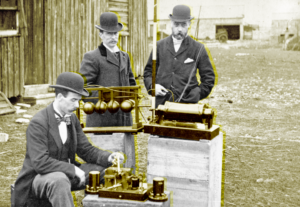
Electromagnetic Waves
Heinrich Hertz proved that electricity can be transmitted in electromagnetic waves. He conducted experiments in sending and receiving these waves during the late 1880s. He discovered the progressive propagation of electromagnetic action through space and measured the length and speed of these electromagnetic waves. These waves conclusively confirmed Maxwell’s prediction of the existence of electromagnetic waves, both in the form of light and radio waves.
Ground Radio Waves
By the early 1800s, these mechanically-operated visual telegraph lines were fairly common in Europe, although only a few simple links were ever built in the United States. Visual telegraphs were slow, covered limited distances, and were usable only during good visibility, so inventors worked to develop a way to send signals by electrical currents along wires, which promised nearly instantaneous transmissions over great distances in all kinds of weather.
In the end, it turned out that there was in fact no way to send standard electrical currents for long distances through the ground. However, in 1895 Guglielmo Marconi would discover the next best thing—ground wave radio signals—which were radio waves that used the earth as a wave guide, traveling across land and sea to the “great distances” envisioned by Steinheil. And Marconi would later also employ “sky wave” signals, which could travel “through the air” and across the Atlantic.
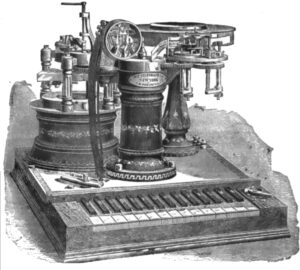
1897—1919
Pioneering U.S. Radio Activities
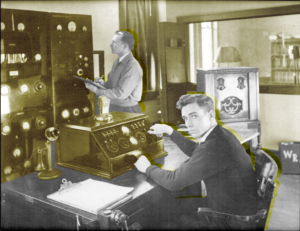
Marconi Wireless Telegraph Company of America
Guglielmo Marconi, an Italian inventor, brought electromagnetic waves out of the laboratory and into the world. He began with short-distance broadcasts in his own backyard. In September 1899, he astounded the world by telegraphing the results of the America’s Cup yacht races from a ship at sea to a land-based station in New York. By the end of 1901, Marconi had founded his own commercial wireless company and broadcast the first transatlantic signal.
Radio Before World War I
On the West Coast of the United States, for example, Charles Herrold began operating a wireless transmitter in conjunction with his radio school in San Jose, California, about 1908. Herrold was soon providing regularly scheduled voice and music programs to a small local audience of amateur radio operators in what may have been the first such continuing service in the world.
The radio hobby grew during the decade before World War I, and the ability to “listen in” with earphones and occasionally hear voices and music seemed almost magical. Nevertheless, very few people heard these early broadcasts—most people merely heard about them—in part because the only available receivers were those handmade by radio enthusiasts, the majority of them men and boys.
Early broadcasters in the United States, such as Herrold, would continue until early 1917, when federal government restrictions forced most radio transmitters off the air for the rest of World War I, stalling the growth of the medium.
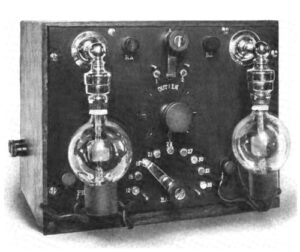
1920s—1950s
The Golden Age
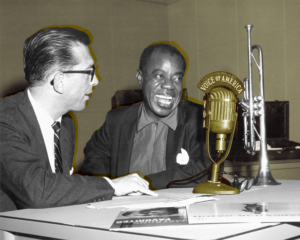
Radio’s Golden Age
The quarter-century to about 1950 was also radio’s Golden Age in most industrial countries, where, despite wartime setbacks, radio flowered before the advent of television. Commercial broadcast programming from the United States influenced broadcasting around the world; some countries emulated it, and others abhorred it. In either case, most countries were slow to define their radio policy, and the pattern of industry development was initially not clear.
Several European countries decided early on that radio’s educational and political potential required that it become a monopoly service provided by the government, growing out of their experience with existing state telegraph and telephone services.
Rather than entertainment, such public-service systems would focus on cultural broadcasts, education, public affairs, and the like. In such countries, government policy was often established before any stations were allowed on the air.
Hybrid Radio Services
Other countries decided to construct a hybrid radio service—one that would combine the best of government-supported public service and commercial entertainment programming. While the government would license all stations, only some would be operated by the government, or by autonomous government-supported authorities, while others would be privately owned and advertiser-supported.
As the world moved toward war in the 1930s, radio broadcasting became an element of national war efforts, used both for domestic morale building and especially for international propaganda. The Axis powers adopted radio first and applied it most effectively. Both the Axis and the Allied powers quickly developed effective monitoring points to listen to and transcribe enemy broadcasts as a means of gathering intelligence.
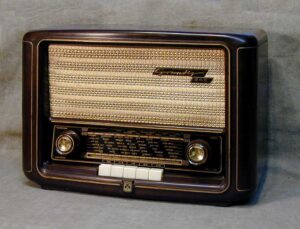
1945—1960
Reinventing Radio
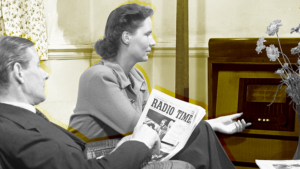
Postwar Rebuilding
Building on its wartime experience, radio expanded exponentially after 1945, with many countries adding new languages and services and a number of fairly small nations playing a prominent role on the air. Indicative of the changing world scene, the British Broadcasting Corporation (BBC) international service added Russian language
programs late in 1946. For many countries, the years after World War II were focused on rebuilding or replacing prewar radio stations and network links. Reconstruction in other European countries included both AM and long-wave services.
Growth of the BBC
European and American radio services faced both political and financial crises through the 1950s and ’60s. The BBC external service had a difficult time with its own government when it included negative press comments on the British role in the 1956 Suez Crisis. British and American international radio services consistently suffered from a lack of sufficient domestic political support, often being the subject of fierce infighting about funding priorities. From the 1950s through the 1980s, the Russians and their satellite nations spent huge sums on electronically “jamming” incoming Western broadcast signals.
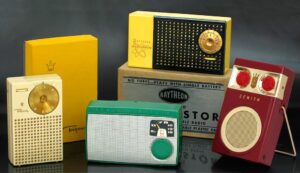
1960s—1980s
New Initiatives
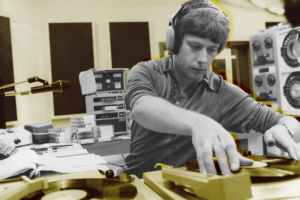
FM Growth
The decades between 1960 and 1980 witnessed the slow development of competition between established public-service broadcasters as well as the growing popular appeal of advertiser-supported music formats on pirate stations or developing local outlets. The use of FM radio expanded in many nations, allowing for more radio channels and, thus, more program variety.
During the 1960s FM radio became the fastest-growing segment of the broadcast business in the United States. In 1961, the FCC approved technical standards for stereophonic radio, a decision that helped place FM at the centre of the country’s growing interest in high-fidelity sound while also providing a service not available on AM.
Pirates and Public-Service Radio
Despite their high-quality programming, Europe’s monopolized public-service radio systems provided little popular music and no opportunity for broadcast advertisers. In 1958 the first “pirate” broadcasters appeared, using transmitters built into small ships moored beyond territorial limits. All the affected countries passed laws to limit advertiser support and provision of supplies to such broadcasters, but the transmissions continued, rapidly building huge audiences. Land-based pirate stations appeared in several countries, but many were short-lived because of stringent laws limiting their operation.
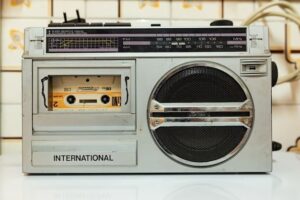
1980—Present
Radio Since 1980
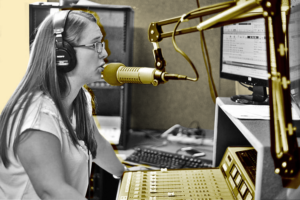
20th Century Improvements
Radio in the last two decades of the 20th century was a thriving and growing industry of ever more stations and often narrower program formats. Many new stations appeared on FM, which grew to dominate radio broadcasting in many regions of the world. In Europe, FM continued to expand as low-cost receivers and transmitters encouraged the rise of small stations that could serve discrete communities or regions without causing interference to other stations or nearby countries. In some countries, AM transmitters declined in number as FM expanded.
Beginning in the 1980s and accelerating through the 1990s, economic pressures on industrial countries’ traditional public-service radio operations had a telling and growing impact. While the government-supported national systems saw themselves as protectors and disseminators of a high-quality vision of national culture and pride, their survival was threatened by the growing number of commercial competitors for audiences.
In the United States
By the last two decades of the 20th century, American radio was presenting two seemingly opposite trends to listeners. Program variety appeared to increase as more stations competed for listeners and each strove to sound different while seeking to retain its existing audience. At the same time, however, a number of radio formats declined or vanished entirely. Classical music and arts programming virtually disappeared from commercial stations, as did such “minority” musical fare as folk music and jazz, while educational broadcasts were restricted to noncommercial stations operating on reserved frequencies. Former regional differences also diminished, making American radio sound much the same no matter where one listened. Critics attributed such lack of diversity to the trend toward station-ownership consolidation.
